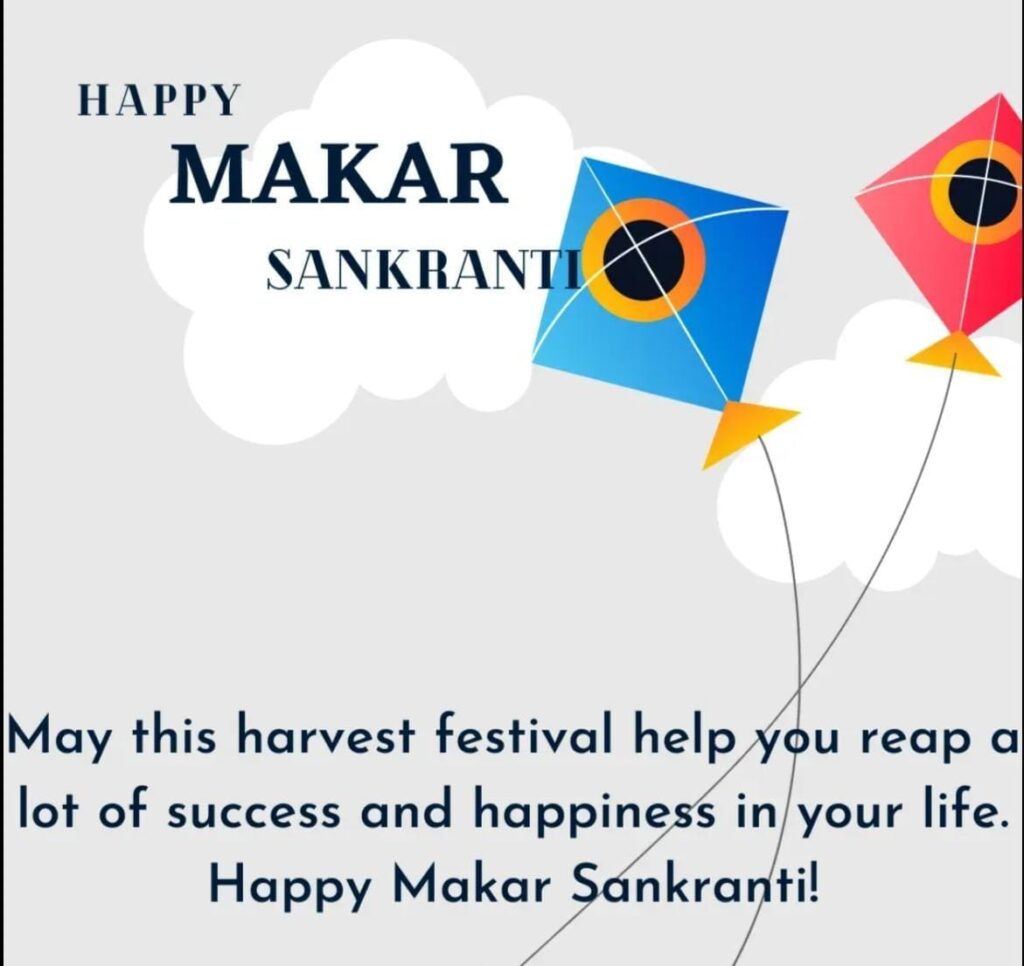14th January, 2023
Makar Sankranti coincides with the day the Sun leaves the tropic of Cancer to move towards the tropic of Capricorn (called Makar in India).
Makara Sankranti is considered a highly auspicious day, Even the mortally wounded Bhishma, who had the boon to choose the time of his death, chose Makara Sankranti day to die.
It is a day of great jubilation for farmers as it marks the end of the biting winters and the beginning of the new harvesting season. This day is therefore celebrated as a Thanksgiving for ending the harsh winters and a bountiful harvest.
Makar Sankranti traditions:
In Maharashtra, the “Til Gul” ( a sweet made of sesame seeds and jaggery) are prepared in homes to mark the harvest of the first sugarcane crop of the year.
In Gujarat Makar Sankranti is referred to as Uttarayan, and kites are flown to wake the Gods from their winter slumber and bless their harvest.
In West Bengal this festival is referred to as “Poush Sankranti” is celebrated as a harvest festival where a variety of sweets such as Pithey, Puli, Patisapta are made with freshly harvested rice flour and jiggery made out of date palms.
In Uttar Pradesh it is believed that taking a holy dip in the Ganges on this day will provide “Moksha” or salvation from sins.
Makar Sankranti is referred to as Pongal in Tamil Nadu and other South Indian states, where it is celebrated as a three day festival.
Sankranti has a philosophical significance in India as well. The word Sankranti literally means ‘movement’, and it is the day for the human race to realise and be thankful for movement. If there was to be no movement within and without our bodies, we would all be dead! But just like yin and yang in China, the concept of movement must be contrasted and appreciated against the stillness.
Therefore, when we fly kites in the lap of the still skies, it is a reiteration of our thankfulness for this very movement!
Indian traditions are also rooted deeply in science and so is the tradition of kite flying on Sankranti. When we fly kites on Sankranti, we expose ourselves to the rays of the Sun. On this day when the Sun begins its journey towards the other hemisphere, it is expected to be benevolent and emanate rays that have medicinal benefits.
Kites of different shapes, sizes, colours and texture vie in sky with each other to make a place for themselves and entangle in a pursuit to outdo the rest.
Like all festivals, Makar Sankranti also has some great lessons for us.
Life is akin to kite flying, where you need to customise a kite as per your abilities, have the perfect manjha or string and set it to flight to soar above the rest when the wind is in your favour.
If you don’t take a proper kanni, it is like not setting any goal, not knowing which direction you need to go.
May the Sun radiate peace, prosperity & happiness in your life, Celebrate Makar Sankranti in right earnest & stay blessed forever.

